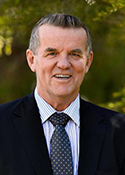Jagajaga
Margin: Labor 3.1%
Region: Northern Melbourne, Victoria
In a nutshell: Covering the northern reaches of Melbourne, the electorate of Jagajaga has provided a reasonably secure electoral base for Jenny Macklin’s parliamentary career since 1996.
Candidates in ballot paper order

|
JENNY MACKLIN JESSICA WARD DAVID MULHOLLAND HUGH McKINNON NATHAN PETER SCHRAM |
Created with the expansion of parliament in 1984 and held for Labor since 1996 by Jenny Macklin, Jagajaga covers suburbs in north-eastern Melbourne from Heidelberg and Ivanhoe out to North Warrandyte in the east. Its present area was mostly in the electorate of Bourke from federation until 1926, which accounted for northern Melbourne including Brunswick and Reservoir; Flinders and Indi from 1922 to 1937, which respectively covered its western suburban and eastern interior regions; Deakin from 1937 until 1955, when Ivanhoe was absorbed by Batman; and Diamond Valley in its eastern parts from 1969 to 1984. When created in 1984, Jagajaga extended north to Bundoora and had the Yarra River as its eastern boundary, with Eltham and its surrounds accommodated by Casey and Menzies. Its present configuration was largely adopted at the redistribution before the 1996 election.
Jagajaga was in part the successor to abolished Diamond Valley, although that seat’s extension into rural areas further to the north made it marginal, to the extent of going with the government of the day at each election through an existence that ran from 1969 to 1984. Diamond Valley was won narrowly for Labor in 1983 by Peter Staples at the expense of Liberal incumbent Neil Brown, who would return to parliament in 1984 as member for Menzies and later become deputy Liberal leader (and was more recently a contentious appointment to the panel that appoints ABC board directors). Staples secured the considerably more accommodating electoral territory of Jagajaga in 1984, which had a notional Labor margin on creation of 8.4%, and retained the seat until his retirement in 1996, in which time his closest shave was a 2.6% winning margin amid the Victorian anti-Labor backlash of 1990.
Staples was succeeded in 1996 by Jenny Macklin, a former researcher and state ministerial staffer and member of the Socialist Left. Macklin retained the seat by 2.7% on her electoral debut and secured slightly stronger margins over the the next three elections. After the 2001 election she rose to the position of deputy leader, a position she maintained until Kim Beazley was deposed by Kevin Rudd in December 2006, at which point she made way for Julia Gillard. Macklin also exchanged her education portfolio for family and community services and indigenous affairs, which retained without interruption throughout the six-year saga of the Rudd-Gillard-Rudd government. The only change to her workload in government was an exchange of housing for disability reform in December 2011. This continuity has been maintained in opposition, albeit that she relinquished indigenous affairs and families and community services was rebadged as families and payments. In the meantime, Macklin secured her hold on Jagajaga with strong successive swings in 2007 and 2010, respectively pushing her margin out to 9.0% and 11.5%, before a forceful 8.1% swing to the Liberals in 2013 pared it back to 3.1%.
Analysis by William Bowe. Read William’s blog, The Poll Bludger.


